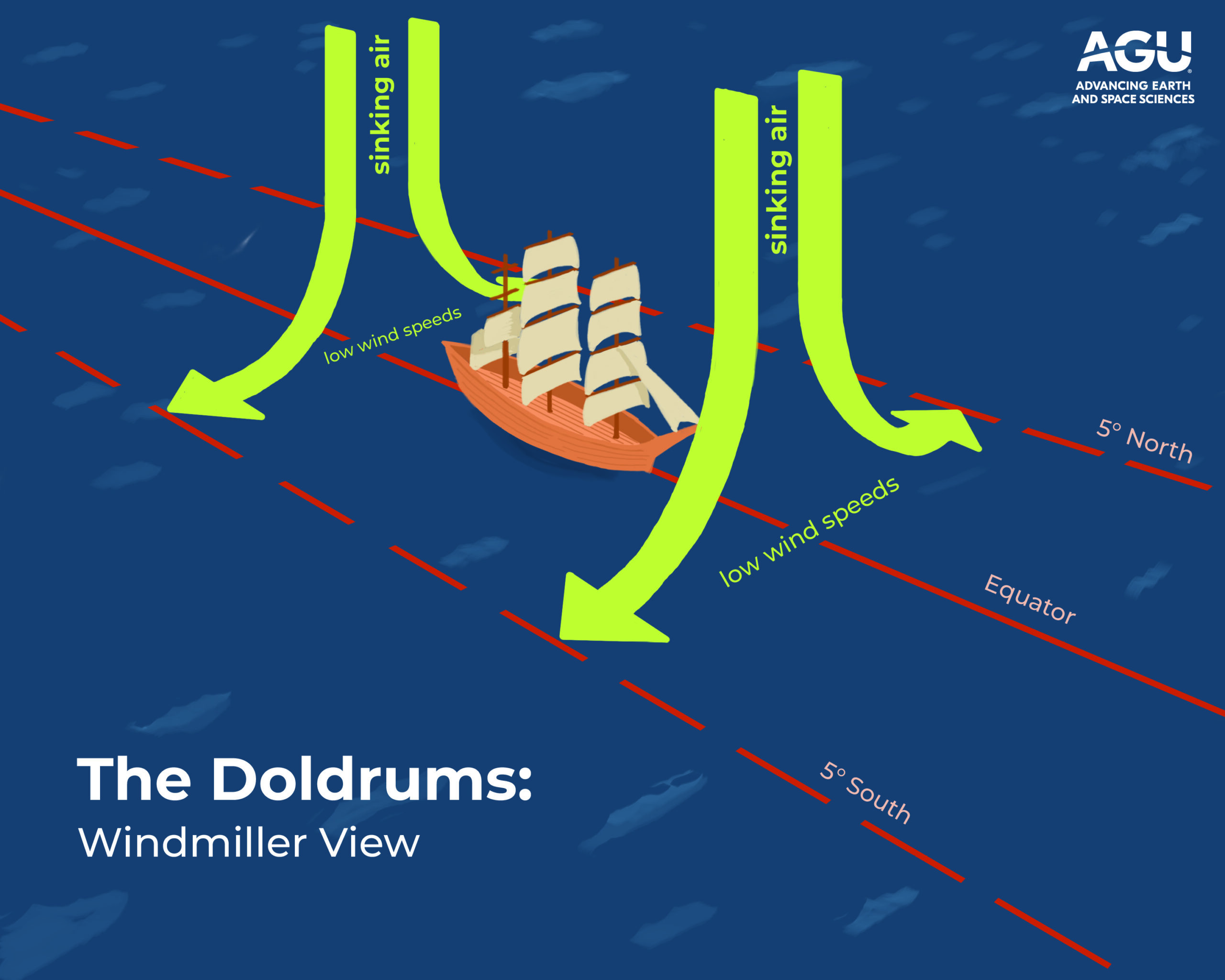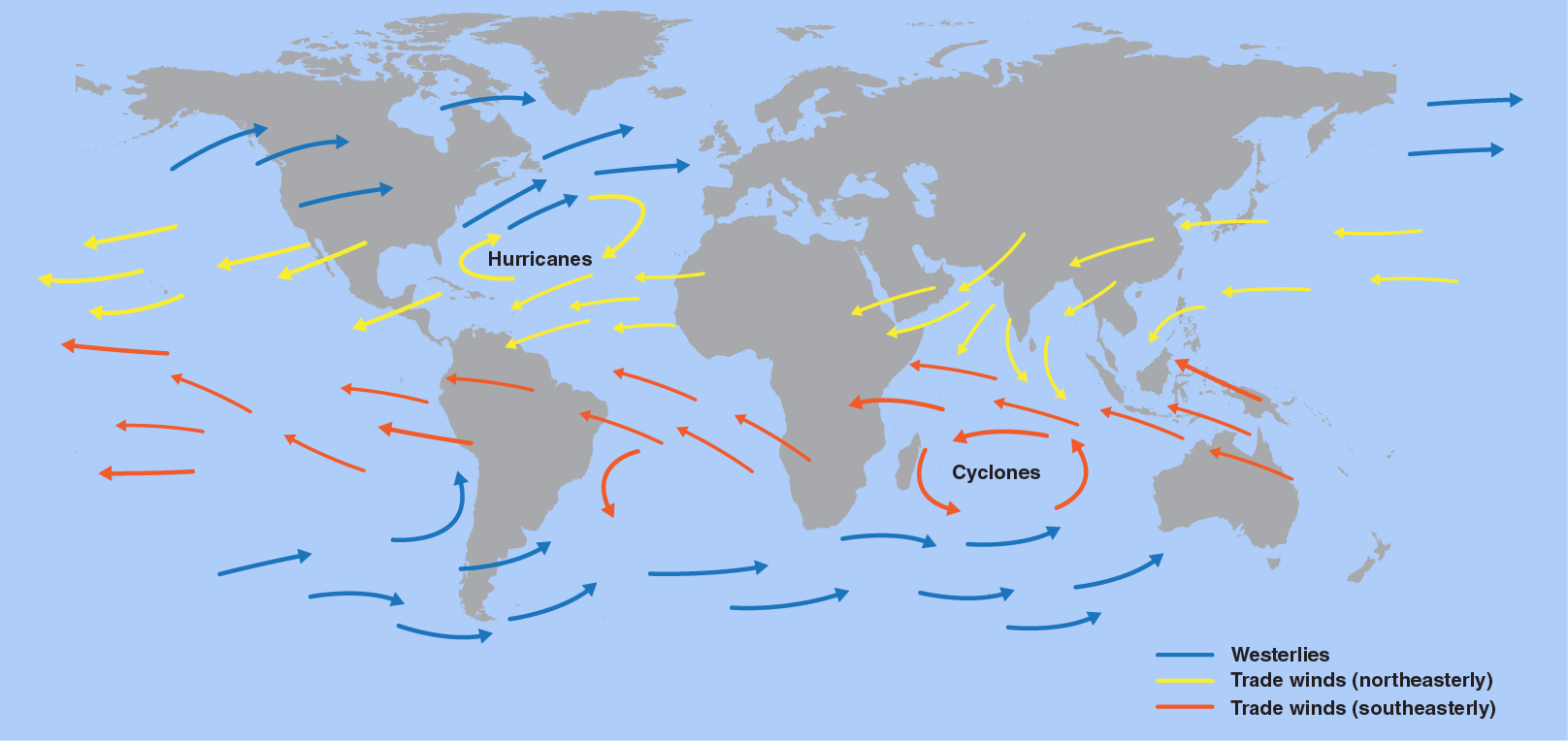Wind belts
a) Doldrum:
- At the equator, warm air rises. Since much of the air movement is vertical, winds are light. This band is the Equatorial Doldrums.
- It is a calm and variable wind belt lying over equatorial low pressure belt trough (5oN-5oS). The low pressure is caused due to heating of atmosphere and ascent of air.
- Due to absence of strong pressure gradient, the wind is light and variable. The movement of wind is mostly upward and strong convective thunder showers occur mostly in the afternoons.
- Atmosphere in this belt remains hot and unbearably sticky. As trade winds from both hemispheres meet here, the belt is also called intertropical convergence zone (ITCZ).
- Heavy precipitation from cumulonimbus clouds is the characteristic feature of this zone.

b) Trade wind belt:
- This high-pressure zone lies from 5o to 30o of latitude on both sides of equator and wind blows towards the equator. Coriolis Effect causes this air flow to be deflected to the west.
- Thus, there is a belt of easterly winds on either side of the equator. In the northern hemisphere, the trade wind blows from Northeast (NE) and in the southern hemisphere from.
- The trade winds become warm when moving equatorward and have less water vapor content. Thus, precipitation is less in that belt and that is why all the tropical deserts of the world are located in this zone.

c) Prevailing westerlies belt:
- The belt of prevailing westerlies lies between 30o to 60o latitude in each hemisphere.
- The westerlies are winds that move out of the subtropical high pressure belts.
- While moving into the higher latitudes, these winds are deflected by coreolis and becomes southesterlies & northeasterlies in N & S hemisphere respectively.
- They are more variable and intense as compared to trand winds. While moving higher latitudes, westerlies become cool and carry high water vapor content.
- The highest precipitation zones in the world are seen in this belt. This is the belt of cyclone due to westerlies disturbances.
d) Polar easterlies belt:
- The polar easterlies are those winds which move out of the Pollar Highs towards the sub-polar low-pressure belts.
- The pollar high pressure belt is due to the thermal low in the polar regions. Cold air flowing outward from the poles, on both side of the equator is (like the Trade Winds) deflected westward.
- The boundaries between wind belts are not fixed but fluctuate and have wave-like geometries.
- A loop like the one from the doldrums to the horse latitudes is called a Hadley Cell.